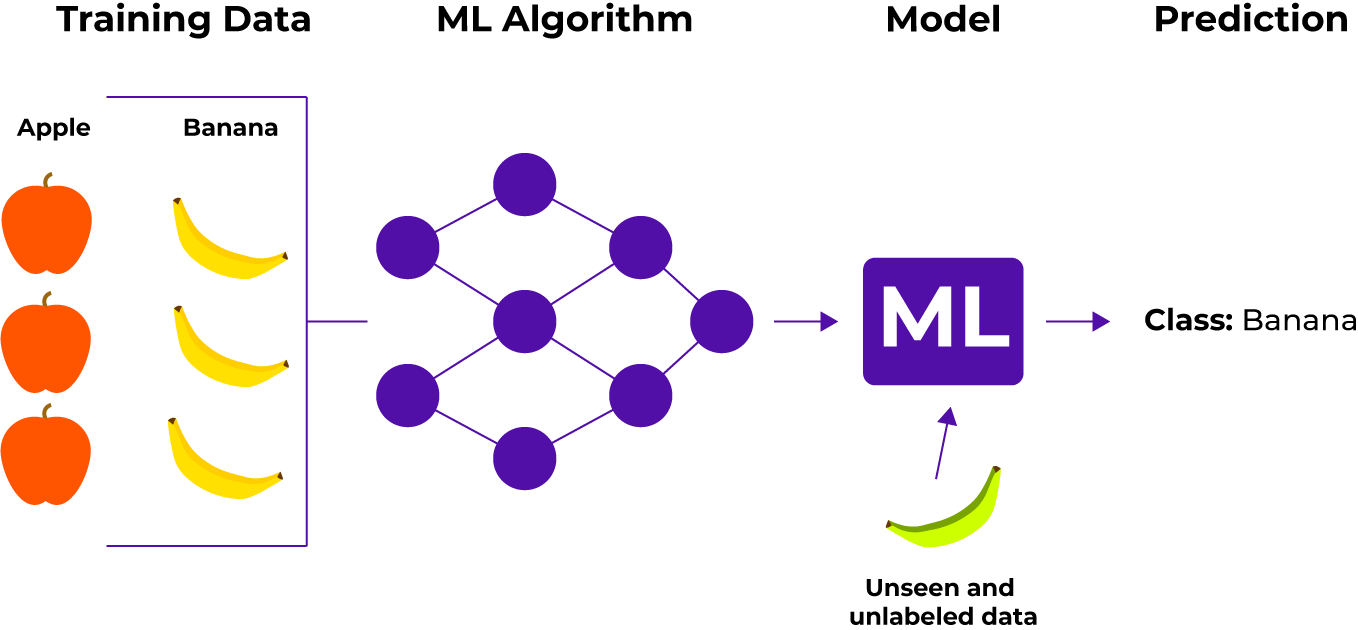Supervised Learning
In this type of learning, the machine are trained to provide the correct output by using several example inputs.

It is very similar to teaching a child with the use of toys or a teacher teaches in the class with several labeled examples and illustrations.
The data is given to the machine in the form of examples with labels, we can feed a learning algorithm with these example-label pairs one by one and trained the machine accordingly. Over time, the algorithm will learn to approximate the exact nature of the relationship between examples and their labels. When fully-trained, the supervised learning algorithm will be able to observe a new, never-before-seen example and predict a good label for it.

Supervised machine learning can be classified into two types of problems, i.e. Classification and Regression Read More
Applications of Supervised Machine Learning
- Medical Diagnosis: Supervised algorithms are also used in the medical field for diagnosis purposes. It is done by using medical images and past labelled data with labels for disease conditions. With such a process, the machine can identify a disease for the new patients.
- Advertisement Popularity: Advertisements that will perform well is often a supervised learning task. Many of the ads you see as you browse the internet are placed there because a learning algorithm said that they were of reasonable popularity (and clickability).
- Speech Recognition: Supervised learning algorithms are also used in speech recognition. The algorithm is trained with voice data, and various identifications can be done using the same, such as voice-activated passwords, voice commands, etc.
- Spam Classification: In an email service, spam filter works as a supervised learning system. Feed email examples and labels (spam/not spam), these systems learn how to filter out the malicious emails so that their user is not harassed by them.
Models based on Supervised Learning
1. Regression Model: This model is based on Supervised Learning that uses labelled data to predict continuous output variables. It works with continuous data.
Some examples are market trends, weather prediction, salary of employees, etc.
In regression, the algorithm generates a mapping function from the given data, represented by the solid line. The green dots shown in the graph are the data values and the solid line here represents the mapping done for them. With the help of this mapping function, we can predict the future data.
For example, if we want to predict the salary of an employee, we can use his past salaries as training data and can predict his next salary.
2. Classification Model: This model is based on Supervised Learning that uses labelled data to solve the classification problems in which the output variable is categorical, such as "Yes" or No, Male or Female, Red or Blue, etc. The classification algorithms predict the categories present in the dataset. It works with non-continuous data or discrete dataset.
Some real-world examples of classification algorithms are Spam Detection, Email filtering, etc.
In classification, the model classifies datasets according to the rules given to it. Usually the dataset used for classification are labelled and the data then gets sorted according to their labelling. Testing data is then classified as one of the labels of the training dataset.
For example, If we want to train a model to identify if an image is of a guitar or a piano, we need to train it with multiple images of both guitar and piano along with their labels. The machine will then classify images on the basis of the labels and predict the correct label for testing data.